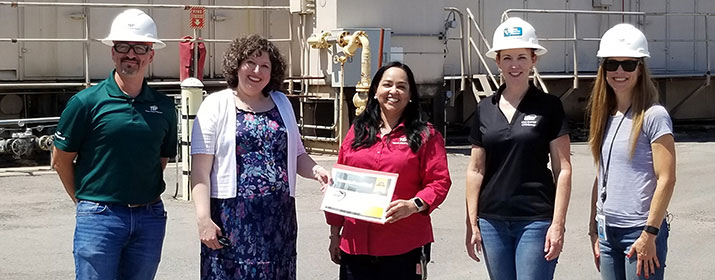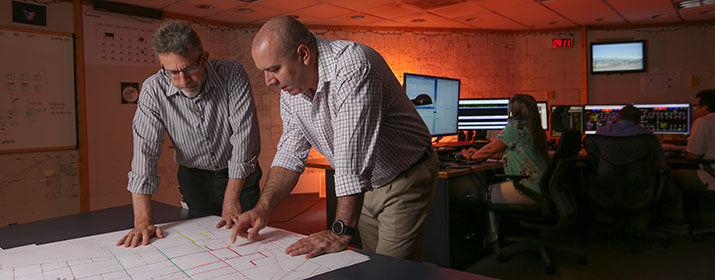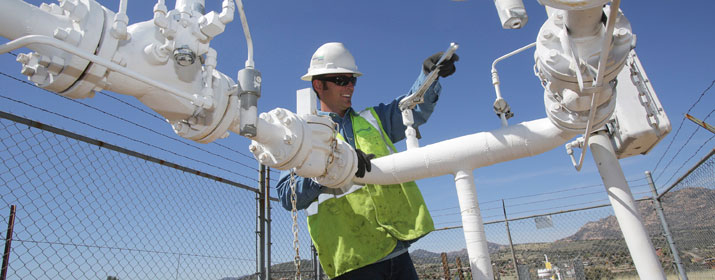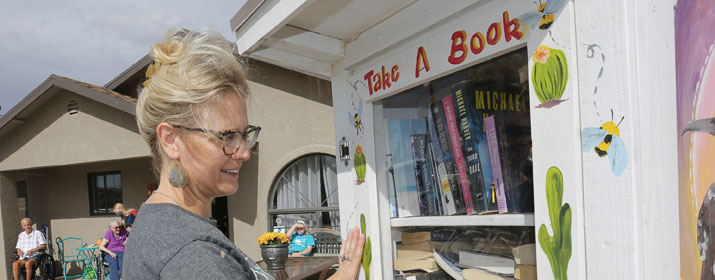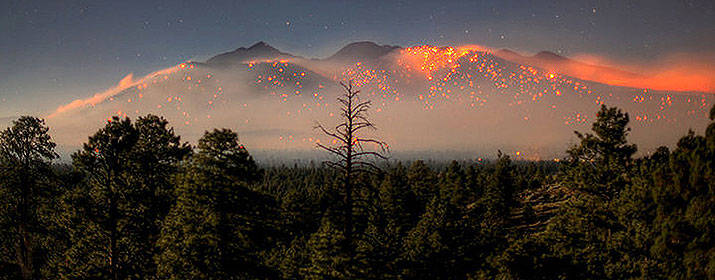
With wildfires an increasing threat as a result of ongoing dry conditions, UniSource Energy Services stands ready to respond to ensure the safe, reliable delivery of gas and electric service to our customers.
Last year’s Flag Fire near Kingman and this year’s Tunnel and Pipeline fires north of Flagstaff serve as recent reminders of the serious threat that wildfires pose to personal safety, property and our ability to delivery energy.
Throughout the year, we take steps to inspect, maintain and fortify our electric transmission and gas lines and to prepare our response if a wildfire threatens our assets.
Inspection and maintenance
UniSource’s 350 miles of transmission lines span remote Arizona forests and deserts, areas often prone to wildfires. Because these lines deliver power to communities from generating facilities elsewhere, widespread outages can occur if they’re damaged or shut down due to a wildfire.
One of the ways we protect our transmission lines is to maintain a wide clearance of up to 300 feet with nearby vegetation. By trimming back trees and shrubs, we remove fuel sources to create a firebreak. Our tree-trimming efforts reach every mile of our transmission corridors at least once every five years.
Twice a year, Vegetation Management Project Manager Kasy Schug and Transmission Circuit Patrolman Greg Wildman conduct aerial inspections by helicopter. Schug looks for vegetation growing too close to our lines and equipment, while Wildman focuses his attention on the condition of our facilities.
“I inspect everything – both old and new equipment,” said Wildman, a veteran employee who has worked on transmission lines for 25 years. “My focus is on the reliability of our transmission circuit, so I’m looking at lines, towers, insulators, guidewires, anchors and other equipment to make sure there’s been no damage and to note if repairs are needed.”
Wildman also conducts foot patrols annually to check for signs of corrosion, loose bolts or damaged insulators. He uses software to determine the integrity of our structures based on responses to a series of questions. Towers with lower scores are scheduled for repairs.
On our gas operations side, crews inspect and maintain more than 3,100 miles of distribution pipelines that deliver natural gas to about 165,000 customers. They regularly check equipment and lines for leaks and signs of corrosion, while also inspecting regulator stations and above-ground facilities.
Training and preparation
UniSource works with local, state, federal and tribal agencies and private landowners to plan and prepare a coordinated wildfire response. Employees participate in annual training events and mock drills involving emergency response agencies. District regional managers take an active role in building solid working relationships with local emergency response agencies.
UniSource employees also participate in the U.S. Forest Service’s annual wildfire meeting, where participants from multiple agencies discuss the expected severity of the upcoming wildfire season, review response protocols for managing fires, and coordinate agency resources. These employees also receive internal annual wildfire training that focus on safety.
To prepare for emergencies, UniSource reviews its emergency plans annually with employees so that they understand their roles, responsibilities and procedures for responding to wildfires and other incidents.
“In any emergency, our immediate attention is focused on protecting people first and property second,” said Martin Anaya, Director of UniSource Gas. “We try to prevent any loss of gas in our system or minimize the period of time that gas service is not available. But in all emergencies, the safety of our employees and the community is always our first priority.”
Watching weather conditions
Monitoring weather and wildfire conditions also helps us prepare. Employees regularly check state and federal wildfire and emergency management websites for areas of elevated wildfire risk as well as active and newly reported fires.
We overlay maps of active fires with the locations of our facilities and equipment to determine the proximity of fires to our equipment. If necessary, crews are dispatched to the area.
“In addition to checking the long-term weather forecasts, we also review the heat index and precipitation forecast so that we’re aware of conditions and can react quickly,” Schug added.
Boots on the ground
When fires approach our facilities, gas and electric service leaders are active participants within the Incident Command Center.
“I make contact with the incident command center and position myself in a location where I can observe the fire, but remain out of harm’s way,” Wildman said. “It’s important that we keep open communication with fire officials since fire retardant can interfere with our lines.”
In some cases, it may be necessary to shut off gas service or de-energize power lines for safety reasons or to assist firefighters in their efforts. For example, during the Tunnel Fire, it was necessary for UniSource to shut off gas service to more than 200 customers for safety reasons.
“Unfortunately, wildfires can’t be prevented because we know they will occur,” said Schug, “but we can prepare for them to mitigate the potential threat to our assets. Because we provide an essential service, it’s important that we’re able to provide reliable gas and electric energy to our customers.”


